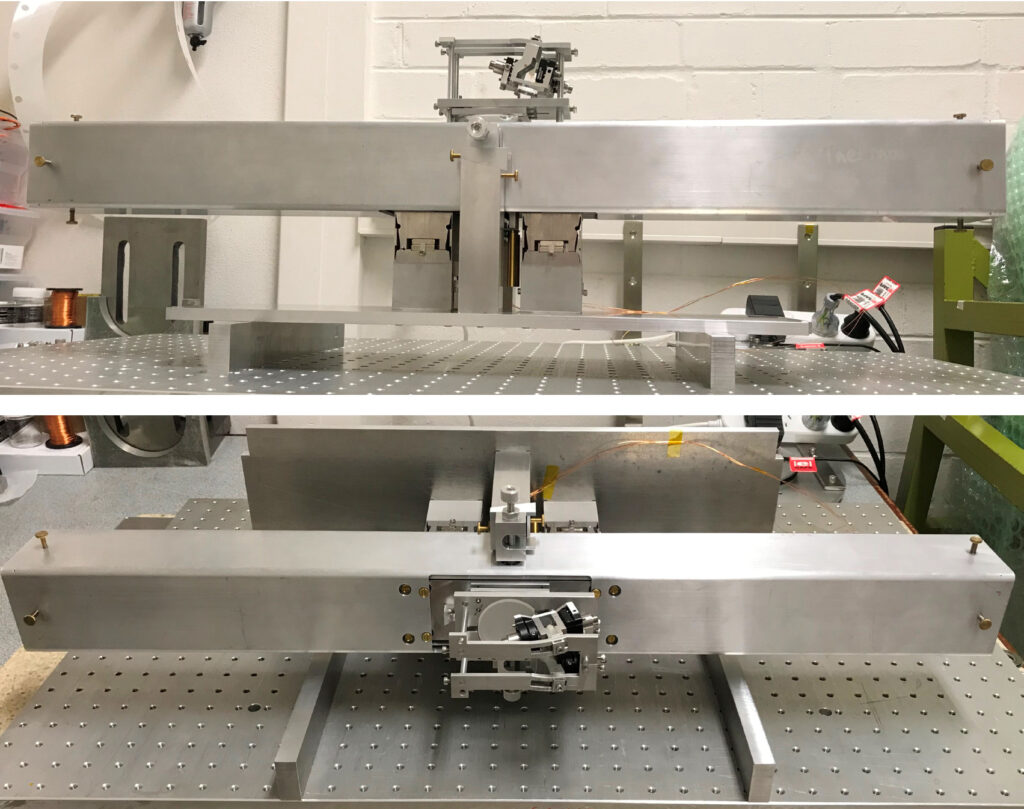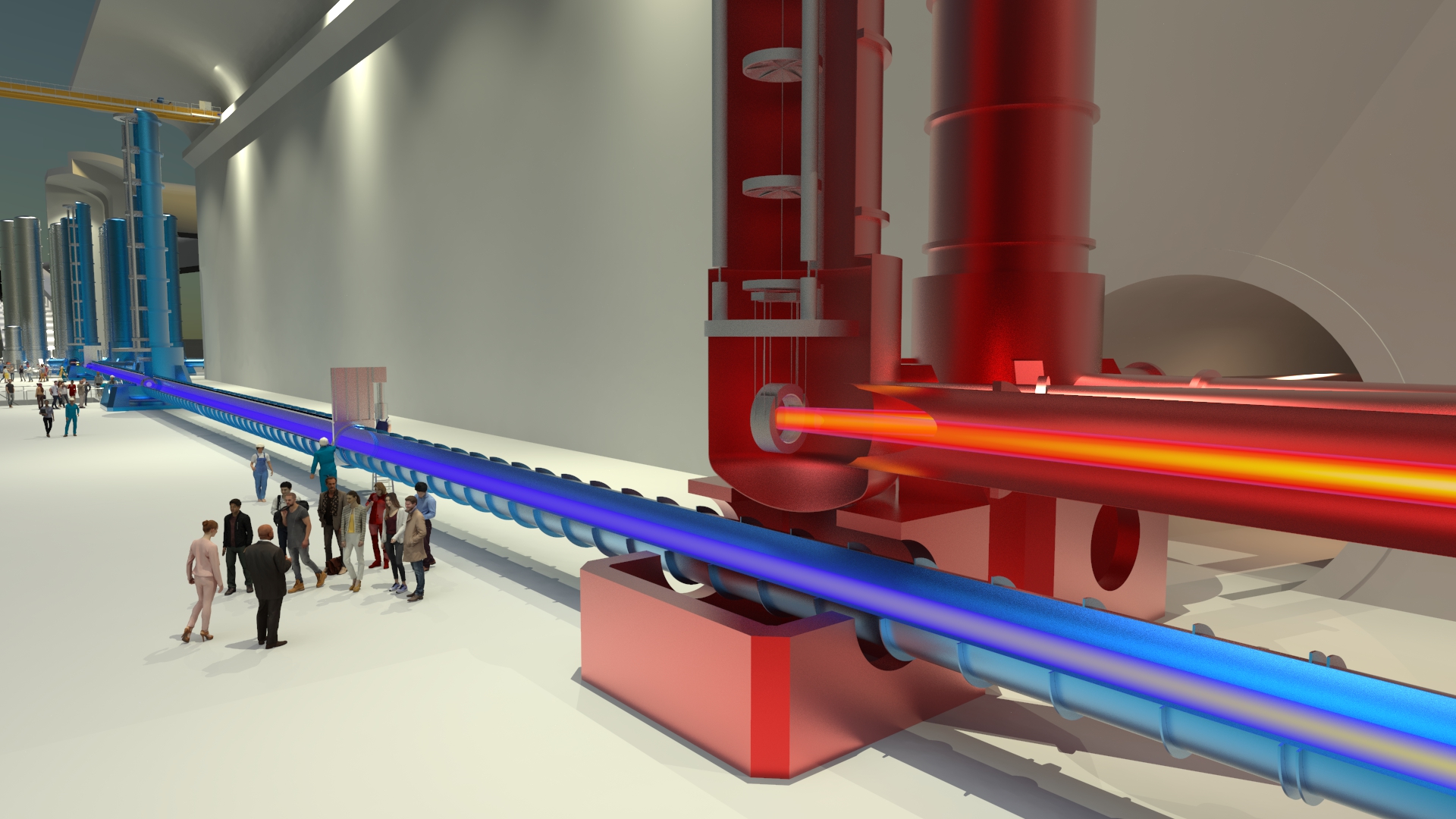Technological Challenge


For the detection of gravitational waves, the Einstein Telescope will depend on highly accurate lasers and sensors. The sensors will register the disturbance caused by gravitational waves. Due to the very small wavelenghts of these waves (10-18 m), the sensors need to be extremely sensitive to detect the gravitational waves. Also the vibrations of the earth itself need to be compensated as they interfere with the accuracy of the readouts. Therefore the Einstein Telescope will push the boundaries of contemporary sensor-technology.
In this framework, two sensor concepts will be highlighted:
- Differential sensors: Optical sensor that measures vertical and horizontal movement of laser wavelengths
- Inertial sensors: Measurement of earthly vibrations with proof-mass
Relation to the Einstein Telescope
Relation to the Einstein Telescope
Inertial sensors:
In the Einstein Telescope the laser beams will be guided through the 10km long arms by optical mirrors (see technology sheet of mirror technology). These optical elements need to be suspended to reduce the earthly vibrations as they are a billion times more pronounced than the gravitational waves. However, these suspension systems will not suffice in excluding all vibrations, this is where the differential sensor comes into place. The function of the inertial sensor is to measure the earthly vibrations so these can be digital excluded from the readouts. The sensor accomplishes these signals by measuring its movement against a decoupled mass. The difference in frequency is the earthly noise.
Differential sensors:
The differential sensors will measure the movement of the laser caused by gravitational waves. These photosensitive diodes will capture the laser signal over a long range and need to be sensitive enough to measures gravitational waves. The conditions in which these sensors will operate are influenced by the physical tendency of the optical instrumentation, which benefit from very cold, cryogenic temperatures and vacuum surroundings.
Industrial relevance and further application fields
Developments for photodiodes and MEMS will typically come from collaborations between SMEs, knowledge institutions and mature companies. Different organizations will be responsible for different aspects of sensor technology (design and production of components, read-out of the signals; etc.).
It can be expected that these sensors will enter other markets as well (aerospace, space travel, automotive, energy (battery), telecommunication), electronics.
References
For further information and more details about this technology field, please check the following Einstein Telescope Design Reports.
E-TEST Conceptual Design Report:
Inertial Sensors: Pages 33-36
Cryo Sensors: Pages 51-54
Einstein Telescope Conceptual Design Report:
Sensors: Pages 136-137
Contact to the Einstein Telescope ecosystem
Are you active in this field of technology? Do you have an innovative approach to meet the requirements for sensors? Then take note of our tenders, join our challenges or simply get in contact with us. Furthermore, you can take a look at the mapping displaying the ET-relevant cempetencies in the EMR-Region. If you would like to be part of this mapping, please contact the business development managers.
Business development contacts
Peter Gier
AGIT DE – p.gier@agit.de
Matthias Grosch
NMWP.NRW DE – matthias.grosch@nmwp.de
Michel Stassart
Skywin BE – michel.stassart@skywin.be
Annick Pierrard
ULiège BE – a.pierrard@uliege.be
Maxime Corvilain
POM Limburg BE – maxime.corvilain@pomlimburg.be
René Kessen
LIOF NL – rene.kessen@liof.nl
Scientific contacts
Prof. Christophe Collette
PML – A&M – ULiège BE – christophe.collette@uliege.be
Dr. Joris van Heijningen
Nikhef NL – joris.vanheijningen@nikhef.nl


